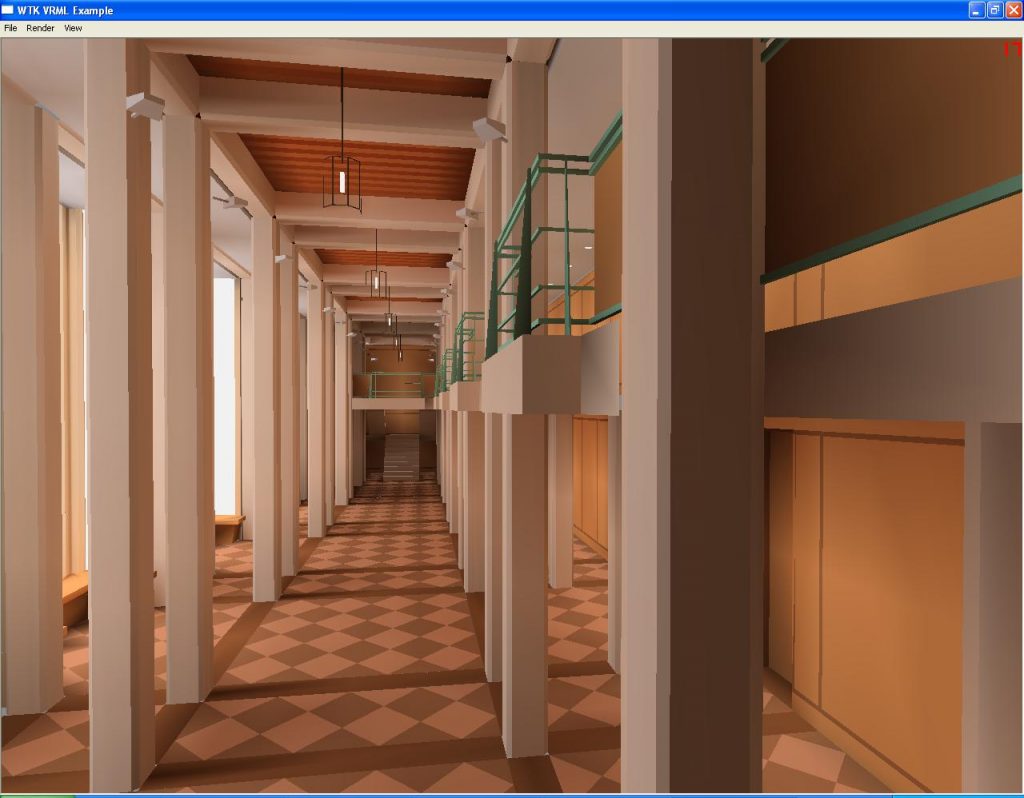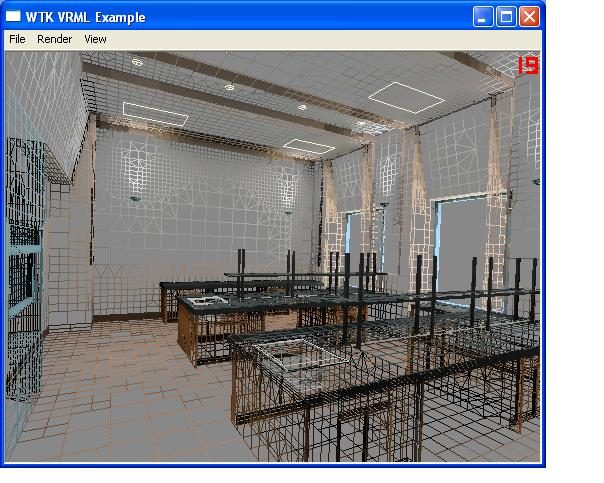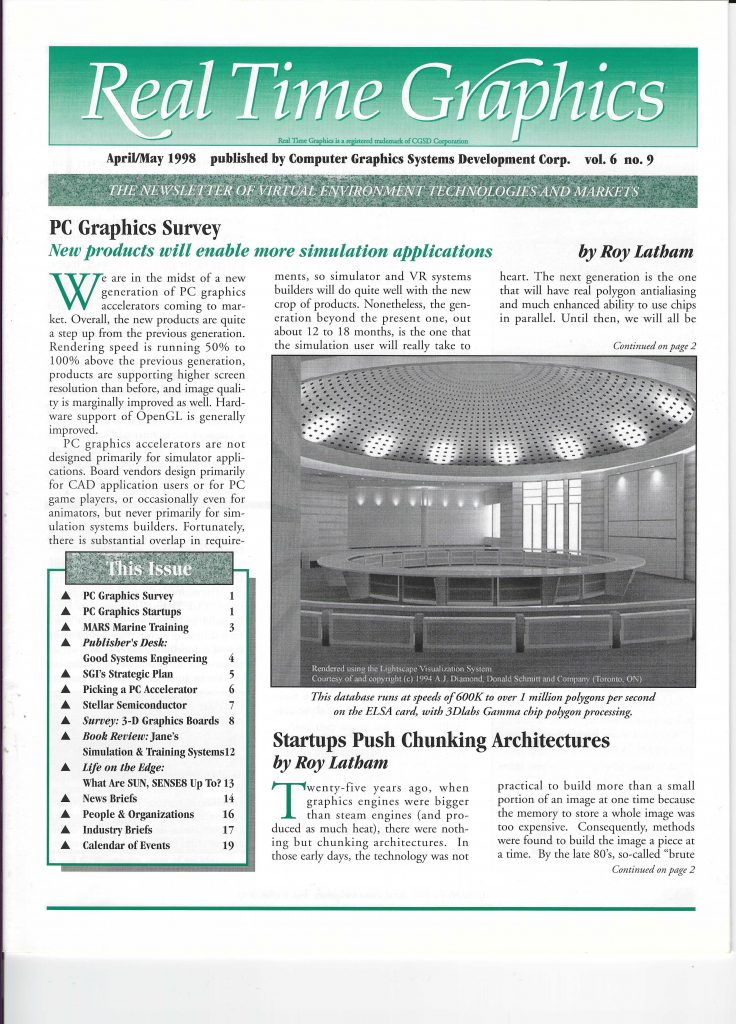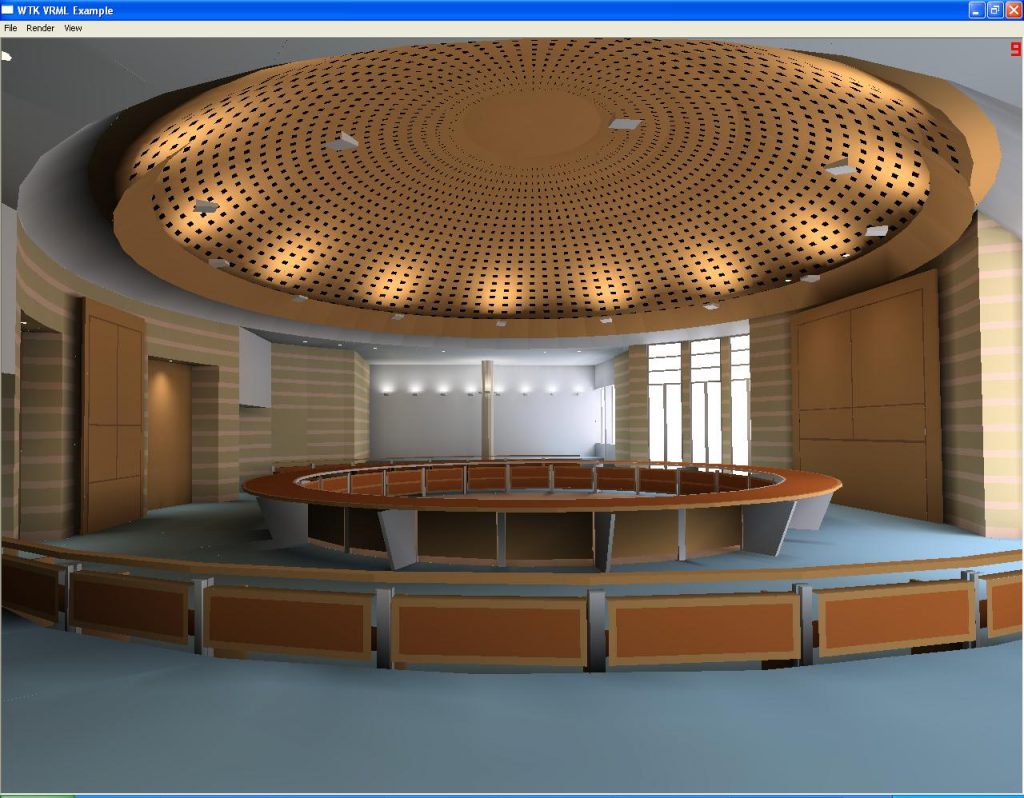I found a number of Sense8/WTK demos in a directory labeled “radiocity”. A number of the files were in NFF format while others were WRL (VRML) format. The NFF files were references in a readme noting they were developed in “Real Light from ATMA Rendering Systems srl in Milan, Italy”. I am pretty sure the WRL files we examples from Lightscape.

Radiosity involved pre-calculating lighting effects into the model. In the NFF models, this was captured in the color of the individual polygons.
This sounded quite similar to what is now known as “baking in” the lighting. I asked chat.openai.com to explain the difference:
Radiosity was one of the first techniques used in baked lighting, although it has been updated and improved over time. The radiosity method was first developed in the 1980s as a way of simulating the diffuse global illumination of a 3D environment. It was initially used in computer graphics and animation, and it was later adapted for use in game development.
In the early days of game development, radiosity was used to calculate the static lighting of a scene, which was then baked into the game engine. This allowed games to have more realistic lighting effects, without the need for real-time lighting calculations, which were computationally expensive and would have slowed down the game.
However, as game technology has advanced and become more powerful, more advanced lighting techniques and algorithms have been developed, such as photon mapping, path tracing, and voxel cone tracing. These methods can produce more accurate and realistic lighting effects, but they also require more computational power. As a result, radiosity is still used in some game engines, but it is not the only method used for baked lighting.
chat.openai.com explanation



You can see in the wireframe rendering of “labV1.wrl” how the lighting is captured directly into the geometry model (particularly in the upward wall sconces and the reflected sunlight around the windows).
Roy Latham’s Real Time Graphics newsletter from April/May 1998 featured one of the radiosity models, touting the capabilities of the a new ELSA board:

It was great to find this same model in the radiocity directory!

I recall this being a pretty popular “benchmark” model at the time. Surprisingly, the only other current reference to this model I can find is in a 1996 VRML whitepaper.
